FAQs
How long does thatch last?
Leaking roof
What sort of straw
was used on my roof?
How long is the waiting list?
Does thatch rot?
Moss on the roof
What about fireproofing
& Fire retardants?
What about insurance?
Is there a local
thatching style?
What about building regulations?
What about Grade 2
listing permission?
Does thatching
make a mess?
Pests in the thatch
Birds nesting
in the thatch?
Terms and conditions
Guarantee
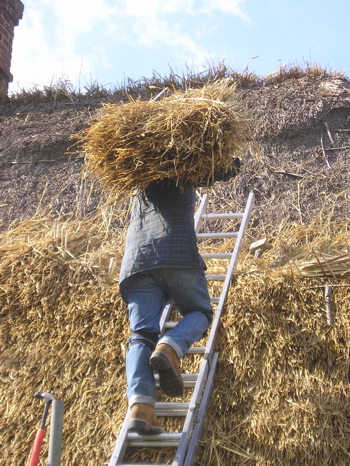
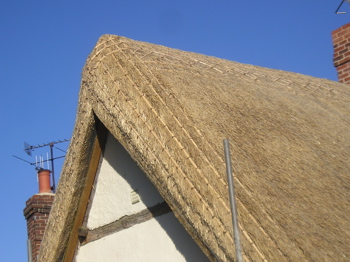
Useful Links
Local authorities Pest control
Since 2018 local authorities have stopped providing in-house pest control except for some residents on benefits, but the links below should help you to locate local specialist contractors to tackle different sorts of infestations.
Local authorities Listed Building consent
General thatching information
Directory of UK Thatchers and Thatching Resources
- Thatched owner’s group – has its own insurance section, also advice on fire prevention.
- The EAMTA, The East Anglia Master Thatchers Association, covering Norfolk, Suffolk, Essex & Hertfordshire. This has some detailed information on specifications for different thatching materials and their properties.
- Thatching Advisory Services
- National Society of Master Thatchers
Thatched roof Fire Protection
- Prestige Fire detection –Advice and services for fire detection and prevention.
- Thatching Advisory Services –Detailed advice on fire protection, and further links to Fire detection and protection providers.
Thatch insurance providers
Please note that I am not endorsing or recommending the following links in any way. These are organisations that claim to specialise in insuring thatched properties. You are advised to make your own enquiries before choosing any insurance provider, paying close attention to the detail of each offer.
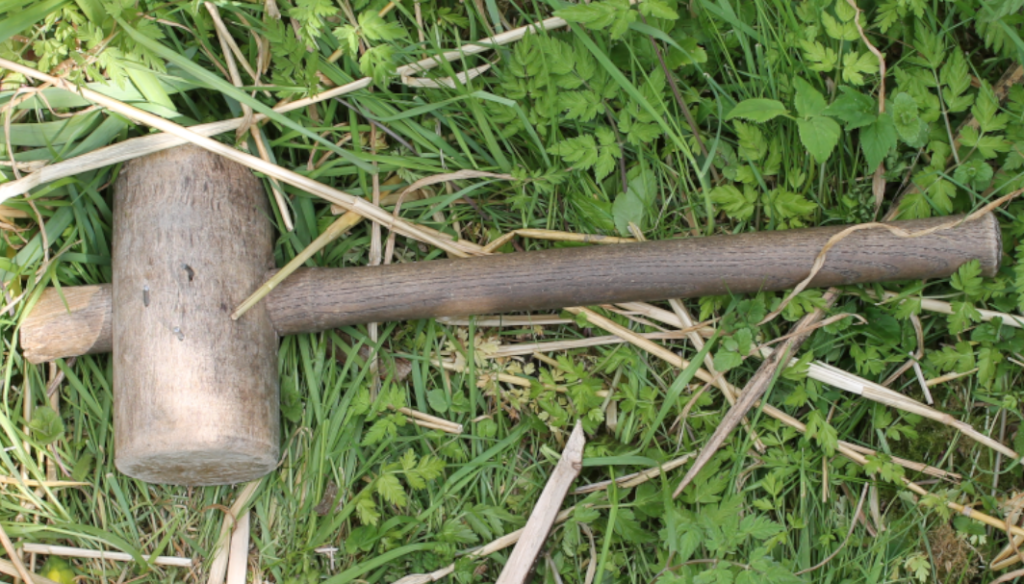
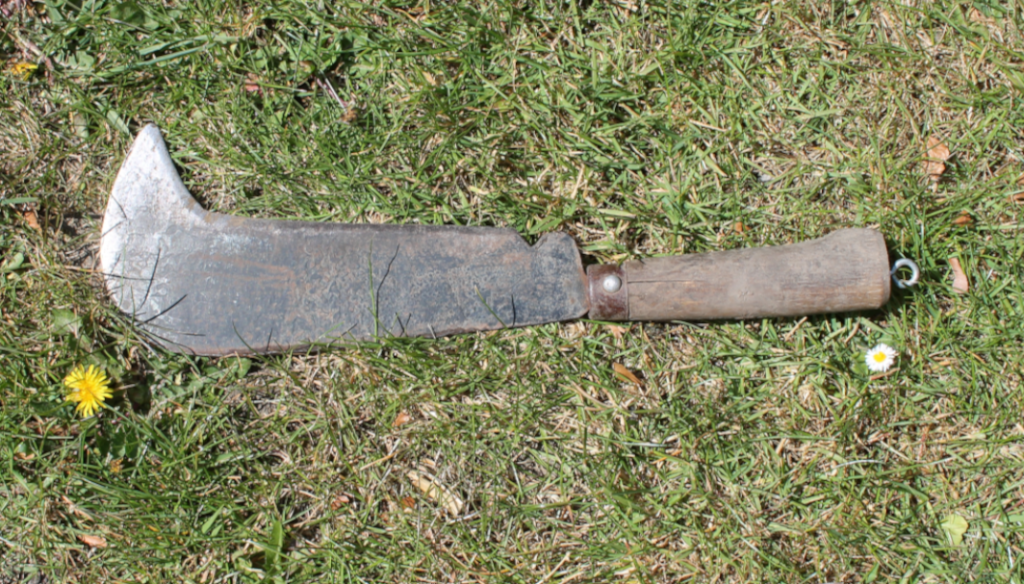
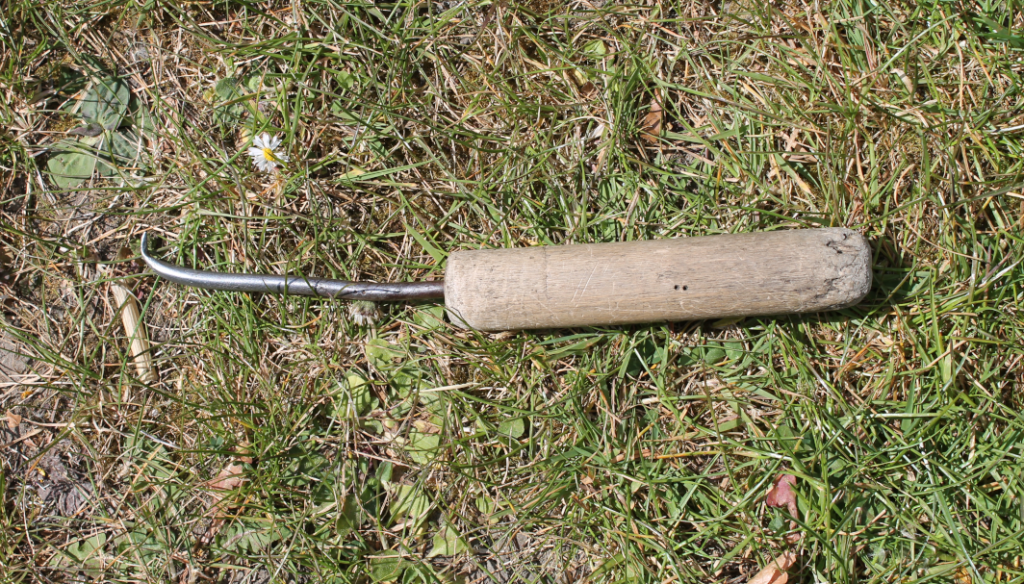

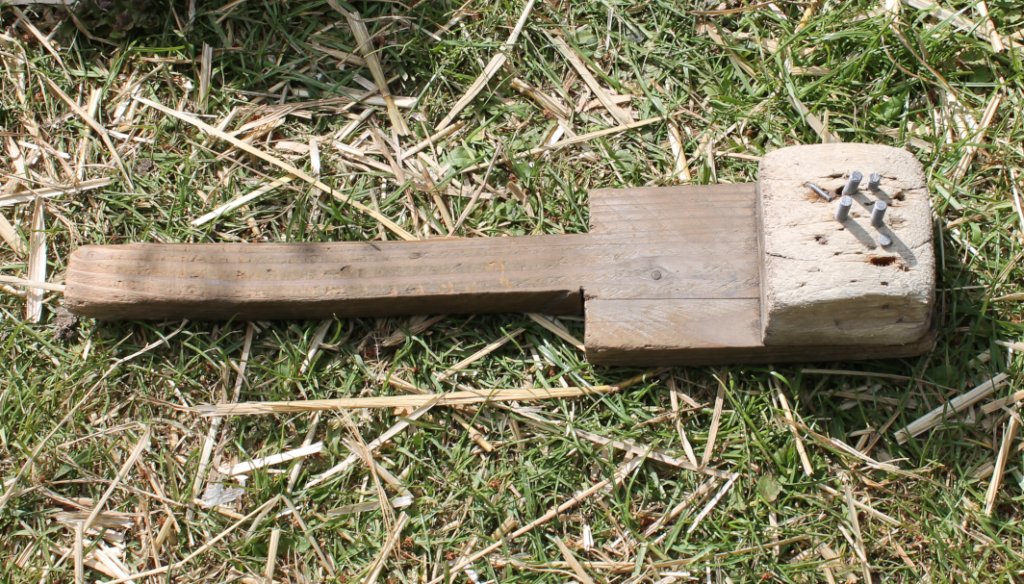
ABOUT THATCHING
General information about thatching, with answers to Frequently Asked Questions, an extended article The truth about thatching followed by links to useful thatching-related sites and services.

Find out more about what I do (and what I don’t do), including some anecdotes and opinions in The Truth about Thatching.
Best wishes
Chris
Frequently Asked questions
How long with the thatch last?
Exactly how long your thatch lasts will depend on many factors including how exposed the site is and how well the thatch has been applied. Aside from extreme weather and acts of God, As a rough guide:
- Water reed thatch tends to last around 50 to 60 years.
- Wheat reed thatch should last around 30 to 40 years, this type of thatching material is traditional to the west country.
- Long straw thatch should last around 20 to 30 years. Long straw thatch is the traditional thatching material of the East Anglian region, and tends to be specified as the preference of heritage organisations in that area.
- Because of the location, a large portion of my work uses long-straw. I use the highest quality, specially grown straw, expertly applied in large quantities, which helps to ensure that your new thatch will last as long as possible.
What if my thatched roof starts leaking?
If your thatch starts leaking then it urgently needs repair. Emergency repairs can include the temporary use of plastic sheeting to prevent further damage. As soon as there is a chance, a more permanent repair should be carried out, matching in the existing thatching material. I’m experienced with all types of repair and patching, and happy to provide thatch reports and quote for insurance jobs if required. Typically leaks are likely to start in the parts of the thatch that have the most wear, such as the valleys around gable windows, or the joints around chimneys. Sometimes they could be due to rodent damage or as a result of storms. I’ll work with my team to help prevent further leakage and then to make the roof sound.
How long will it take to thatch?
Apart from the weather, which will of course have an effect, how long the actual thatching process takes mainly depends on how many thatchers are working on the job. At present I generally work as a team of three. Re-thatching a medium-sized cottage might take somewhere between six and eight weeks. Larger projects take correspondingly longer, a barn might take around ten weeks, and smaller jobs including re-ridging will be quicker. Phone me to discuss how long your job is likely to take.
How much will it cost to thatch my roof?
Every job is different. My clients tell me that I am very cost effective, especially as I do not charge VAT. Get in touch to discuss how much your job will cost. Some jobs will be more complex, and could require scaffolding. Other jobs can be simpler and provide easy access to the roof.
What about repairs to the ridge
Ridges should be replaced every 10 to 15 years, around half way through the life of the thatch. At the same time any patching or repairs should be made to the main thatch, and new netting should be installed. A replacement ridge tends to cost in the region of 20 – 25% of the cost of a complete re-thatch (naturally, precise details vary). Get in touch to discuss re-thatching your ridge.
What about other repairs to my thatch
I am a fully experienced Master Thatcher, and provide a full service, meaning that I can competently tackle repairs to any thatched roof, including sub-contracting specialists if needed for specialist work such as decorative lead work. Get in touch to discuss your job.
How can you tell what sort of straw has been used on my roof?
What’s the difference between long straw and wheat reed?
Different thatch materials are traditional to different areas of the UK. Reed thatch is more expensive, but lasts much longer. Reed is an East Anglian or more specifically a Norfolk material. It is more robust and requires a distinct thatching technique. Long straw thatch is traditional to East Anglia, where I work. Listed buildings will usually need to comply with regulations by ensuring that they use the material traditional to their area for re-thatching. Defining what material has been used is not an exact science. An experienced Thatcher will be able to tell you, or research further by visiting sites such as www.eamta.co.uk for further explanation about the characteristics of the different thatching materials and how to recognise them.
Long straw: Just as a chef needs to use the best ingredients, the material used for your roof is fundamental in defining the final quality and longevity. For effective long straw thatching the basic material needs to be long, and grown without the use of nitrogen-based fertilizers, so that it does not rot prematurely. Modern commercial wheat is no good as the stalks are far too short and the fertilizer used means that it rots quickly. We use older species of wheat – specially grown for thatching. We mainly use a species called Maris Huntsman which ensures that your thatch will be as long-lasting as possible.
If your building is listed, you may find that there are restrictions on the type of thatch that can be used. Check with your local authority for details.
How long is the waiting list?
I will do my best to fit in urgent repairs as rapidly as possible. If your job is small it may be possible to fit it in more quickly between larger projects. Generally at present the waiting list is around 18 months.
Does thatch rot?
Yes, straw and reed is organic matter and can rot. Normally this does not happen on your thatched roof because viable thatch means that the water only penetrates a short way into the thatch material and runs off quickly, so that the thatch can dry out. Eventually, however, with prolonged dampness on older material that has already started to break down, rot can set in. How long this takes depends on the particular situation. Once thatch starts to rot, its ability to repel water becomes seriously reduced and repair or replacement is needed.
Moss on the thatch
It is fairly common for moss to start growing on parts of an older thatched roof. It will depend on the location and aspect of the roof, maybe the north side that does not get direct sunshine, especially if it is also shaded by trees. Generally the moss will not have any great impact on the ability of the roof to keep you dry so not usually a matter of great concern, though the moss can be removed if you want to do that for cosmetic reasons.
What about fireproofing?
As is well understood, the biggest problem with thatch is that it is more flammable than other forms of roofing. Current best practice for fireproofing thatch is to ensure that a fireproof sarking board is laid on the rafters and underneath the thatch, stopping any fire from spreading from the straw to inside the roof and the rest of the house. The trouble is that this is only possible to install when roofs are stripped right back to the rafters. As most thatching work consists of re-thatching, where material is added on top of the existing thatch, it is often not economic to strip back to the rafters.
Fire retardants
It is possible to apply solutions to the outer surface of the thatch that aim to slow down the spread of fire. Fire retardants are designed and tested specifically for use on thatched buildings and produced to ISO 9002 standards. They are water repellent external fire retardants that are sprayed directly onto the surface of the roof. Tests rate retardants as protecting the roof for over half an hour against spread of fire.
These do not claim to actually stop you getting a fire in your thatch, but could help to provide a bit more time should the unthinkable happen. I have some experience of fire retardants, and I can quote for using them, but I don’t generally recommend them. They are expensive, yet so far it is unclear how much they affect the long-term durability of the thatch.
What about insurance?
It is vitally important that thatched properties have appropriate building insurance. Most standard mainstream house insurance policies will not cover thatched properties, so it is important to find the right specialist insurance company. I don’t offer specific advice about this, although I am competent to assess your thatched property and produce a report if needed. If you are a new owner it will pay to research the market carefully. Insurers vary in their policies and requirements, see the links on this page for sites where you can find out more about thatch insurance.
Is there a local thatching style?
Yes, there are thatching styles local to the area. The style partly depends on the type thatching material used. Particular to the north Essex area is the practice of putting pinnacles on the roof. Most of the properties that I work on are Grade 2 listed, meaning that it is important to ensure that the style of thatch and materials used are in the spirit of the traditions of the local area, as well as complying with the requirements of English Heritage or the local council of the area. I am able to work in a variety of thatching styles and I am happy to discuss them with you.
What about building regulations?
I am used to ensuring that my work complies with the requirements of building regulations specified by the relevant Local Authority, however it is rare that building control inspect.
What about Grade 2 listing permission?
Most of my work is on listed properties, however since it tends to be defined as ‘Like for like repairs’ in English Heritage terms, it is comparatively rare for specific listed building consent to be required. I am accustomed to working to standards laid down by English Heritage and Local Authorities. More
Will the thatching make a mess?
Not as much a mess as traditional thatching used to. Like any major building work, some mess and inconvenience is inevitable, but I try to keep this to a minimum. Traditionally all straw was dressed on-site, a process that involves delivering a large quantity of straw to your garden and then wetting it down and combing, making rather a mess. I carry out these processes off-site, delivering relatively small quantities as it is needed, thus minimising inconvenience. The dirtiest part of the process tends to be removing the top layer of old material. All materials are natural and non-toxic, so hazards are minimal. Read my testimonials section to find out what previous customers think about the mess.
Pests in the thatch
Thatch is an attractive environment for insects and other wildlife. The main reason for applying galvanised netting to the thatch is to keep out larger vermin, particularly rats. It is very common to find wasps nests in thatch, and bees and other insects are not unusual. As a Thatcher it is not my job to deal with such pests. It is the job of the local authority to help you combat any infestations, be aware that they will probably charge you for this. See my links page for more information << add link to Pest control>>
Birds nesting in the thatch?
If wildlife are not doing extensive damage or causing a nuisance then it is fine to leave them there. Some species are protected, so seek advice.
What are your terms and conditions?
You will get detailed terms and conditions when I provide you with a quote for your job. Terms feature staged payments during the job. All work is carried out to local council and Master Thatcher Association specifications.
Guarantee
Like any reputable tradesman I aim to work to the highest standards of quality and craftsmanship, and ensure that my work is fit-for-purpose. I also expect to enter into a long-term relationship with clients, coming back to renew your roof in due course. Because thatching is not an area that easily lends itself to the application of clear building standards it is not possible to offer an explicit written guarantee. However I do undertake to rectify any problems or defects with my work within a reasonable time frame.
The truth about thatching
Interesting discussion points about thatching
Why thatch is such a brilliant thing
Not only is thatch a traditional craft with an ancient history, thatch provides fantastic insulation, both for heat and for sound. Thatch also has impeccable green credentials, using material that is benign means that there are no worries about environmental damage or pollution, and a minimal carbon footprint is involved compared with other roofing alternatives. Not to mention that your house will look beautiful and you will have enhanced its value once it has been re-thatched. Thatched properties are very sought after and tend to retain their value.
Art cannot be measured
Thatching is a traditional craft. The methods and materials used vary from region to region, as does the language used to describe them. Thatching is part of a line of history that goes back into the mists of time, a craft as old as napping knives out of flint. All this, interesting as it is, adds up to an area of the building trade that is not so open to controlled and defined measurable specifications and standards.
Sometimes such a lack of standards can lead to what can tactfully be called ‘lively debate’ where it is not really possible to agree exactly what fundamental terms like ‘long straw’ really mean. This needs to be borne in mind when talking about thatch and when translating discussion into actual work, a roof over your head and hard cash to pay. I have over twenty years of experience, and I make every effort to carry out my business in a clear, honest and straightforward manner. This website aims to help explain the basics and provide links where you can read further, but do bear in mind that in thatching, with the best of intentions, some issues are a matter of debate.
Traditional Thatcher
Being a Traditional Thatcher means being trained to understand and follow the thatching traditions of the area. With more than twenty years on the job, I am experienced with traditional thatch materials – Long Straw, Water Reed and Wheat Reed. I am also fully versed in the local traditions of the areas where I work – North Essex, Cambridgeshire and east Hertfordshire. I’m able to be versatile with the decorative details of different finishes, ensuring, when required, that they are authentic to the locality, or finishing the thatch to your own preferences.
Costs of materials going through the roof
There continue to be stories in the press about price rises of Thatcher’s materials. I try my best to hold my prices steady. This is not easy, as there often tends to be a long gap between quoting a job and starting it, during which time the materials cost can go up alarmingly. I have at times ended up working at a loss through not passing on price increases, so from now on I am reserving the right to make extra charges in cases where materials costs have risen beyond a certain point.
Trends in thatching
Thatching is not an area that tends to be subject to very rapid change, especially as currently local authorities such as Uttlesford don’t give planning permission for thatching new build extensions to thatched properties, instead specifying that they should use materials such as ceramic tiles to emphasise the differing historical characteristics of each part of the building. The majority of thatching work is dominated by the ideal of conserving the manner and styles of building dating back to the seventeenth century and before. Despite this there are discernible trends.
The details of how a thatched roof is dressed, especially including the way the ridge is attached and how the wooden ties are arranged, have historically been a matter of custom in particular areas, customs which have tended to be very much preserved by, and at the discretion of, the local Thatcher.
Recently I have noticed clients getting more involved in wanting to discuss details of style. Clients are now likely not only to specify if their ridge is flush or block cut, but also take an interest in the details of the final dressing.
Straw dogs

There is a tradition of decorating thatched roofs with what are properly called Straw Finials. These generally consist of animals such as cockerels, dogs or pigs modelled in straw and placed at the top of the ridge. This tradition originates from the West country and although it is not part of the authentic thatching traditions of the locations where I tend to work, I can supply quotes and arrange design and installation if required. If you are interested in including a straw finial on your property, get in touch to discuss.
Long Straw traditions and listed building consent
Using long straw tends to be the preferred approach of the Local Authorities (The people who provide listed building consent) in the areas I work. As part of a general policy of conservation of the building stock, these Authorities are interested in preserving the appearance of historic structures, and aim to encourage the use of traditional methods and materials. This is not always a straightforward issue. During the history of a typical seventeenth century cottage, for instance, it may have been re-thatched several times, and different materials may have been used. The Local Authority will generally suggest that Long straw should be used, however, if you can supply evidence (such as photos), to show that your building was previously thatched with other materials, they may be persuaded to give permission to follow the tradition you’ve evidenced.
Long straw is an excellent material, but applying it is labour intensive, it takes the longest time and the most work to prepare, so it is not always the cheapest option. Long straw lasts well (especially if the thatching is done well), is in keeping with local traditions and looks beautiful. It does not last as well as Water Reed, which is a more expensive material, and which is not generally tended to be a traditional material in most of the places I usually work in.
Using Long straw
For each day’s work on the roof putting the straw into place, up to a day is spent on the ground preparing the material in the form of ‘yealms’ or combed bundles of straw. A typical small cottage might have up to two tons of straw applied to the roof.
Don’t be alarmed if you don’t see us every day on site during the process of thatching your roof, we’ll be busy preparing the straw off site.
The straw that broke your roof
The sound of your thatch breaking down
After it has rained and the sun comes out, if you listen carefully, you may hear a quiet but definite clicking noise coming from your thatched roof. This, I have heard it suggested, is the sound of your straw breaking down. The theory is that as the sun beats down on the damp straws, the drying process stresses the fibres, causing them to snap into smaller lengths, gradually compromising their ability to waterproof your roof. The clicking sound is thus the sound of your roof gradually disintegrating. Thanks to Mark Dawson for this observation.
FEEDBACK
Please do let me know what you think about my website, what is useful, if anything is plain wrong, or if more information would help, or if you have a useful link to add to my site. I’m aiming to explain who I am and what I do in a way that will be useful for people who are looking for a Thatcher. Don’t forget to get in touch and ask me if you need a quote or if you would like to discuss any aspect of thatching in more detail.
